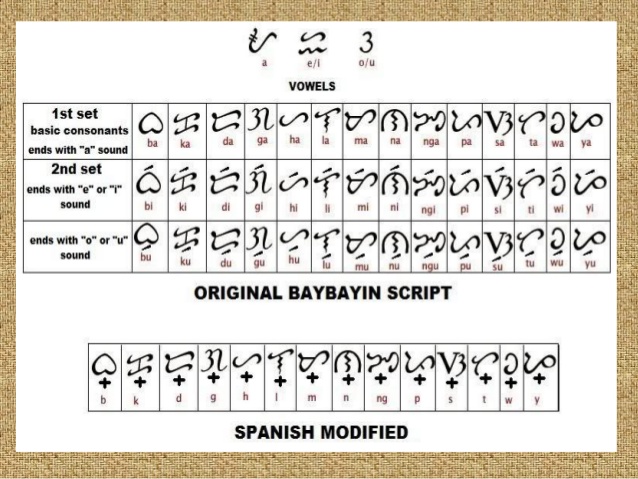Top 50 Must-Try Fruits in the Philippines
➢ Pinoy Search Network list of 50 must-try Fruits available in the Philippines. These locally grown fruits are not necesarrily native but are abundant enough to merit recognition as part of daily Filipino cuisine. As a tropical territory, the Philippines grows several delectable fruits of varying sizes, flavors and colors. All these fruits are harvested all-year round. For plurality, we also included some sweet crops.
➢ Pinoy Search Network list of 50 must-try Fruits available in the Philippines. These locally grown fruits are not necesarrily native but are abundant enough to merit recognition as part of daily Filipino cuisine. As a tropical territory, the Philippines grows several delectable fruits of varying sizes, flavors and colors. All these fruits are harvested all-year round. For plurality, we also included some sweet crops.

Most of the fruits included on this list are from fruit trees. Fruits sold in the markets, not grown locally and are only acquired through importations are not included in the list. As a bonus, we have included five more fruits in the list for you try.
The Philippines fruit industry is an important driver of the nation's economy. The major fruit species grown in the country include Banana, Pineapple, Mango, Papaya, Calamansi, Durian, Jackfruit and Lanzones based on volume of production. The major fruit exporters are Banana, Pineapple and Mango. Philippines ranked 2nd in global production of Pineapple (2.5 million tons in 2013), 4th in Banana worldwide (9.2 Million tonnes - 2012) and Mango production, 7th (2004) globally.
1 Mangga (Mango)
 ➢ National fruit of the Philippines. A juicy stone fruit which tastes sharply sour when raw, but delectably sweet when ripe. Significantly high in Vitamin C and Folate.
➢ Varieties: Indian mango, Apple Mango, Carabao Mango
➢ National fruit of the Philippines. A juicy stone fruit which tastes sharply sour when raw, but delectably sweet when ripe. Significantly high in Vitamin C and Folate.
➢ Varieties: Indian mango, Apple Mango, Carabao Mango
➢ Region: Guimaras, Cebu, Zambales and Davao
Credits: Wikimedia Commons
2 Aratiles (Muntingia)
 ➢ These tiny berries are sweet to the taste and has an inedible skin. Popular to children, Aratiles normally grows in residential backyards.
➢ These tiny berries are sweet to the taste and has an inedible skin. Popular to children, Aratiles normally grows in residential backyards.
➢ Region: Residential Backyard
Credits: Wikimedia Commons
3 Durian
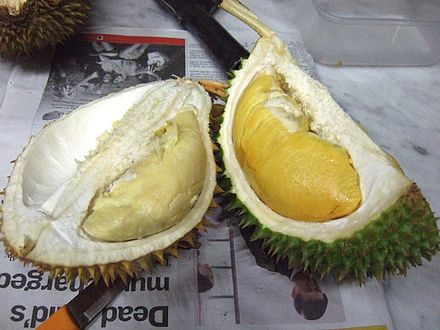 ➢ Known as king of all tropical fruits, spiked fruit Durian is sweet, savory and creamy. It emits an unusually strong offensive odor. Purported to be an aphrodisiac, it has become a staple in candies, milkshakes and ice creams. It is rich in Vitamins B1, B6 and C.
➢ Known as king of all tropical fruits, spiked fruit Durian is sweet, savory and creamy. It emits an unusually strong offensive odor. Purported to be an aphrodisiac, it has become a staple in candies, milkshakes and ice creams. It is rich in Vitamins B1, B6 and C.
➢ Region: Davao province
Credits: Wikimedia Commons
4 Kamias (Bilimbi)
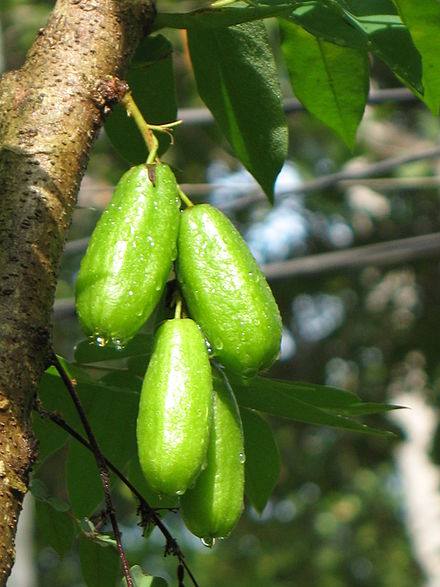 ➢ Sour and eaten raw with rock salt. Good as a sweet pickle relish. Can be cured and made as ingredient for Sinigang or Paksiw.
➢ Sour and eaten raw with rock salt. Good as a sweet pickle relish. Can be cured and made as ingredient for Sinigang or Paksiw.
➢ Region: Residential Backyard
Credits: Wikimedia Commons
5 Pakwan (Watermelon)
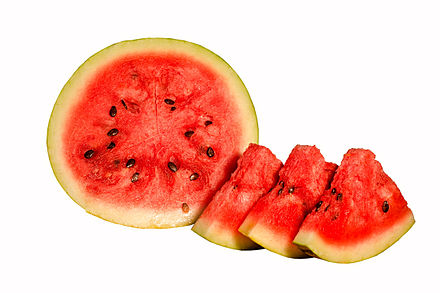 ➢ As its english name suggests, Pakwan is watery, sweet, crunchy and fibrous. It has a distinctive red color. Pakwan is rich in vitamin C.
➢ As its english name suggests, Pakwan is watery, sweet, crunchy and fibrous. It has a distinctive red color. Pakwan is rich in vitamin C.
➢ Region: Central Luzon
Credits: Wikimedia Commons
6 Lansones (Lanzones)
 ➢ Lanzones may look like smooth small potatoes but its edible fruit is sweet, sour and sometimes bitter. The bitter taste is attributed to the sap it contains. Its skin is thick and inedible.
➢ Lanzones may look like smooth small potatoes but its edible fruit is sweet, sour and sometimes bitter. The bitter taste is attributed to the sap it contains. Its skin is thick and inedible.
➢ Region: Guimaras, Laguna, Batangas, Quezon, Butuan, Cagayan De Oro, Camiguin
Credits: Wikimedia Commons
7 Pinya (Pineapple)
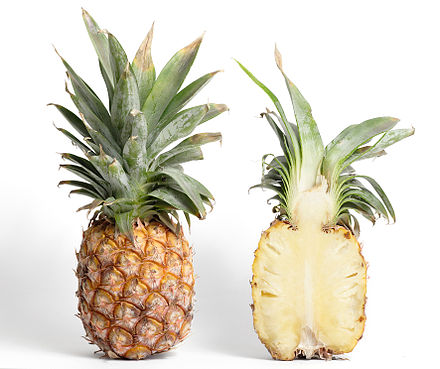 ➢ Pinya can be consumed raw, in can, cooked or juiced. It is very rich in Vitamin C and Manganese. Though very nutritious, Pinya is contraindicated for pregnant mothers.
➢ Pinya can be consumed raw, in can, cooked or juiced. It is very rich in Vitamin C and Manganese. Though very nutritious, Pinya is contraindicated for pregnant mothers.
➢ Region: Nueva Vizcaya, Bukidnon
Credits: Wikimedia Commons
8 Chesa o Tiesa (Canistel or Egg Fruit)
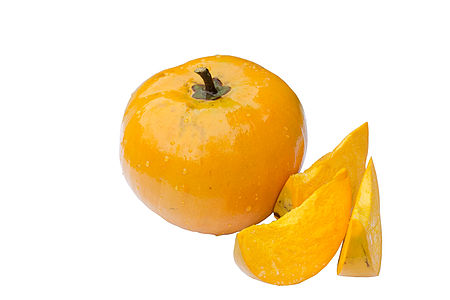 ➢ Chesa is a sweet orange-yellow fruit with a texture comparable to a boiled egg-yolk. Chesa is very rich in Vitamin B3 and C.
➢ Chesa is a sweet orange-yellow fruit with a texture comparable to a boiled egg-yolk. Chesa is very rich in Vitamin B3 and C.
➢ Region: Residential Backyard
Credits: Wikimedia Commons
9 Macopa (Water Apple or Rose Apple)
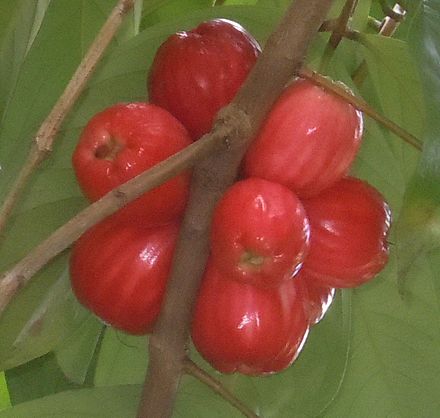 ➢ Crunchy pinkish fruit the size of a tomato. When fully ripe, this bell-shaped fruit has a shiny red texture. Also known as Tambis, it is watery and bland to the tongue.
➢ Crunchy pinkish fruit the size of a tomato. When fully ripe, this bell-shaped fruit has a shiny red texture. Also known as Tambis, it is watery and bland to the tongue.
➢ Region: Residential Backyard
Credits: Wikimedia Commons
10 Abokado (Avocado)
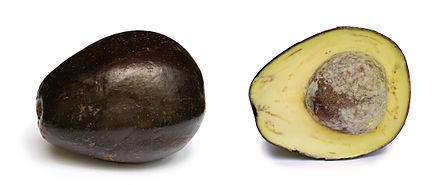 ➢ Popular in Milk Shakes, Salads, Tortas, Guacamole and Ice Creams, Avocado has a high monounsaturated fat content. It is rich in Vitamin B5 (Pantothenic Acid), B6, B9 (Folate), K and Potassium.
➢ Popular in Milk Shakes, Salads, Tortas, Guacamole and Ice Creams, Avocado has a high monounsaturated fat content. It is rich in Vitamin B5 (Pantothenic Acid), B6, B9 (Folate), K and Potassium.
➢ Region: CAR, Region 2
Credits: Wikimedia Commons
11 Rambutan
 ➢ The cousin of Lychee and Longan, red-hair Rambutan has a smooth flesh that envelopes a large inedible seed. It is mildly sweet in taste. It is rich in Vitamin B3 (Niacin) and Manganese.
➢ The cousin of Lychee and Longan, red-hair Rambutan has a smooth flesh that envelopes a large inedible seed. It is mildly sweet in taste. It is rich in Vitamin B3 (Niacin) and Manganese.
➢ Region: Laguna, Batangas, Nueva Vizcaya, Mindoro, Panay Island and Mindanao
Credits: Wikimedia Commons
12 Atis (Sugar Apple)
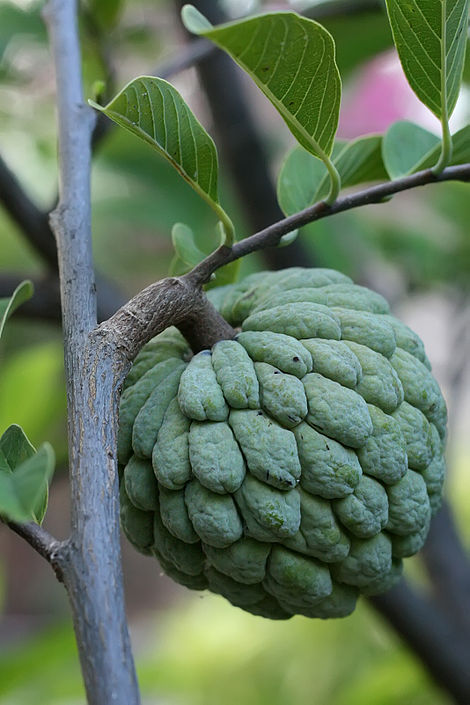 ➢ Atis is sweet and creamy like custard. It is rich in Vitamin C and Manganese. It is remarkable for its pulpy segments containing black inedible seeds.
➢ Atis is sweet and creamy like custard. It is rich in Vitamin C and Manganese. It is remarkable for its pulpy segments containing black inedible seeds.
➢ Region: Residential Backyard
Credits: Wikimedia Commons
13 Langka (Jackfruit)
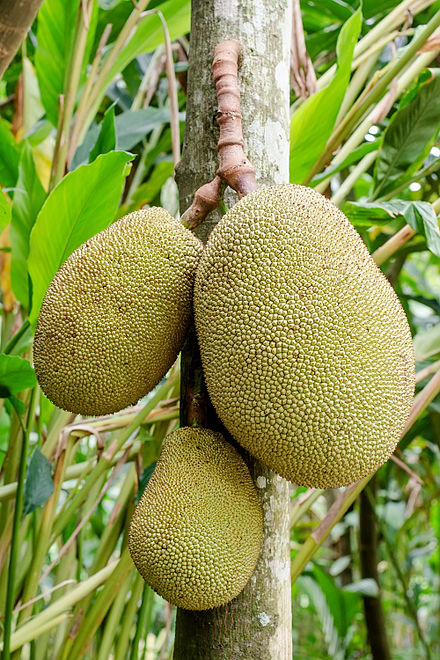 ➢ Langka has a distinctive fruity and sweet aroma. The flesh flavor tastes like the combination of mango, banana, apple and pineapple. Its sweetness is amazingly balanced. It is usually included in jams, halo-halo, ginataan and turon. Langka is rich in Vitamin C, B6 and Magnesium.
➢ Langka has a distinctive fruity and sweet aroma. The flesh flavor tastes like the combination of mango, banana, apple and pineapple. Its sweetness is amazingly balanced. It is usually included in jams, halo-halo, ginataan and turon. Langka is rich in Vitamin C, B6 and Magnesium.
➢ Region: Zambales, Isabela, Quirino and CAR
Credits: Wikimedia Commons
14 Santol (Cottonfruit)
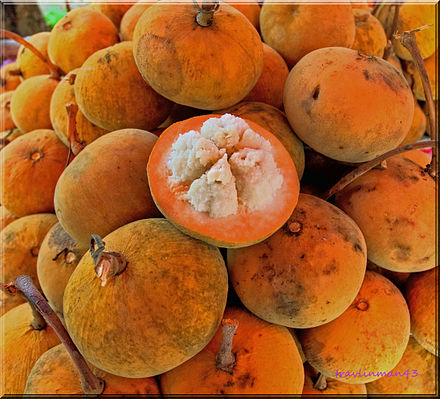 ➢ Santols's flesh near the seeds may be sweet or extremely sour. It also contains inedible brown seeds. It is used in jams and as an ingredient to Sinigang.
➢ Santols's flesh near the seeds may be sweet or extremely sour. It also contains inedible brown seeds. It is used in jams and as an ingredient to Sinigang.
➢ Region: Residential Backyards
Credits: Wikimedia Commons
15 Melon (Cantaloupe)
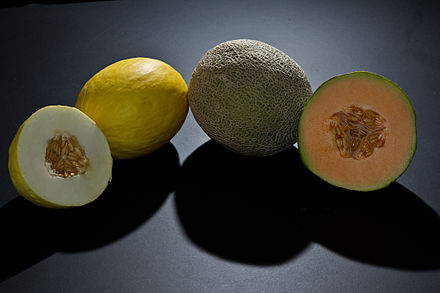 ➢ Popular in cold juice and salads, Melon is a refreshingly sweet and fleshy fruit.
➢ Popular in cold juice and salads, Melon is a refreshingly sweet and fleshy fruit.
➢ Region: Residential Backyards
Credits: Wikimedia Commons
16 Kaimito (Star Apple)
 ➢ Kaimito is a purple skinned dessert fruit. It is delicious to taste, but the skin and rind contain latex which is not edible. Its flesh cross section resembles a star-shaped flower.
➢ Kaimito is a purple skinned dessert fruit. It is delicious to taste, but the skin and rind contain latex which is not edible. Its flesh cross section resembles a star-shaped flower.
➢ Region: Residential Backyards
Credits: Wikimedia Commons
17 Chico (Sapodilla or Zapota)
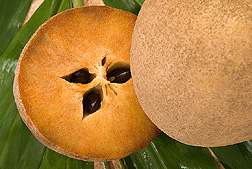 ➢ Brought to the Philippines by the Spanish through Mexico, the flesh is pale yellow in color. The fruit tastes sweet and malty. Its aroma resembles the smell of fine wine. It is rich in Vitamin C and Iron.
➢ Brought to the Philippines by the Spanish through Mexico, the flesh is pale yellow in color. The fruit tastes sweet and malty. Its aroma resembles the smell of fine wine. It is rich in Vitamin C and Iron.
➢ Region: Residential Backyards
Credits: Wikimedia Commons
18 Suha (Pomelo)
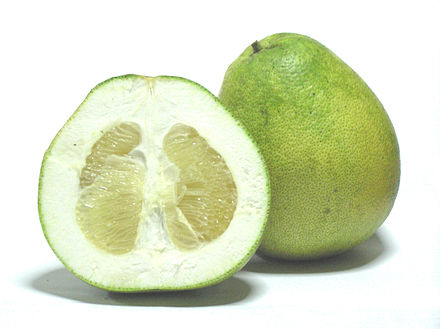 ➢ The largest known Citrus fruit variety, Suha is famous in drink mixes. It is also eaten raw with rock salt. Pomelo is very rich in Vitamin C. It is usually yellow or greenish in color, and pinkish when ripened.
➢ The largest known Citrus fruit variety, Suha is famous in drink mixes. It is also eaten raw with rock salt. Pomelo is very rich in Vitamin C. It is usually yellow or greenish in color, and pinkish when ripened.
➢ Region: Davao
Credits: Wikimedia Commons
19 Saging (Banana)
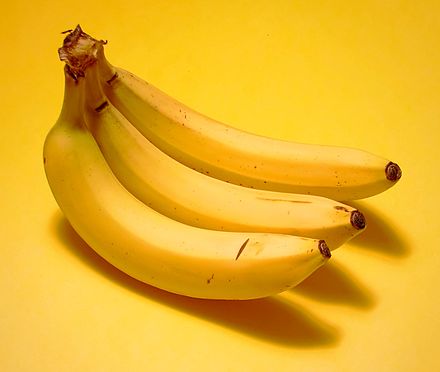 ➢ Known as a complete food, it can be eaten ripe, or as a plantain when used in cooking. Usually elongated and curved, it is rich in Vitamin B6, Manganese and Potassium.
Variety: Saba, (Morado) Gloria, Lacatan, Latundan, Senorita, Cavendish, Bungulan
➢ Known as a complete food, it can be eaten ripe, or as a plantain when used in cooking. Usually elongated and curved, it is rich in Vitamin B6, Manganese and Potassium.
Variety: Saba, (Morado) Gloria, Lacatan, Latundan, Senorita, Cavendish, Bungulan
➢ Region: Quirino, Isabela, Davao
Credits: Wikimedia Commons
20 Dalanghita (Mandarin Orange)
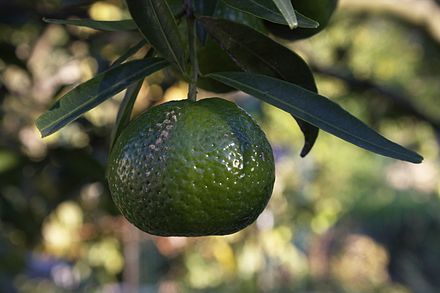 ➢ A sub-variety of Citrus, Dalandan is mildly sweet and sharply sour just like Calamansi when raw. Dalanghita is rich in Vitamin C.
➢ A sub-variety of Citrus, Dalandan is mildly sweet and sharply sour just like Calamansi when raw. Dalanghita is rich in Vitamin C.
➢ Region: Nueva Vizcaya, Quezon, Aurora, Residential Backyards
Credits: Wikimedia Commons
21 Buko (Coconut)
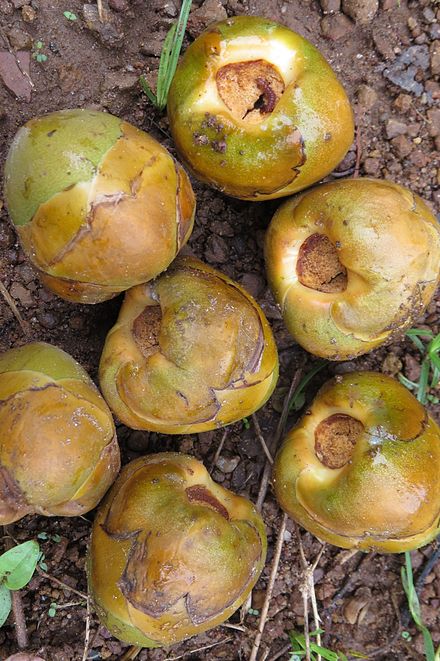 ➢ Known as the Tree of Life, Buko is considered to be a very healthy and delectable drupe. Coconut meat and juice remain popular throughout the streets of the Philippines. It is usually made as an ingredient in ice cream, milk shakes, salads, vinegar, wines and rice cakes. Buko is rich in Iron, Manganese, Zinc, Folate (B9), Protein and Saturated Fats. Philippines is considered as one of the biggest producer of coconut in the world.
➢ Known as the Tree of Life, Buko is considered to be a very healthy and delectable drupe. Coconut meat and juice remain popular throughout the streets of the Philippines. It is usually made as an ingredient in ice cream, milk shakes, salads, vinegar, wines and rice cakes. Buko is rich in Iron, Manganese, Zinc, Folate (B9), Protein and Saturated Fats. Philippines is considered as one of the biggest producer of coconut in the world.
➢ Region: Aurora, Quezon, Pangasinan, Visayas, Mindanao, Residential Backyards
Credits: Wikimedia Commons
22 Bayabas (Guava)
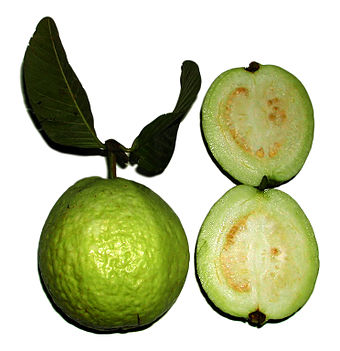 ➢ The skin is usually rough and green, with the flesh varying in colors green, yellow and pink. The pulp may be sweet and sour. It is used in Sinigang and in fruit jams. It is incredibly rich in Vitamin C (275%), Fiber and also in Potassium.
➢ The skin is usually rough and green, with the flesh varying in colors green, yellow and pink. The pulp may be sweet and sour. It is used in Sinigang and in fruit jams. It is incredibly rich in Vitamin C (275%), Fiber and also in Potassium.
➢ Region: Residential Backyards
Credits: Wikimedia Commons
23 Guyabano (Soursop)
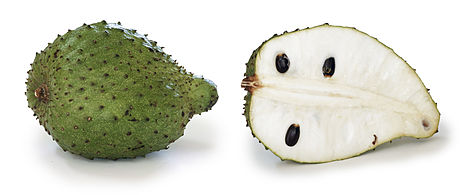 ➢ Popular in Juices, Guyabano tastes sweet and sour. Many described its taste as a combination of strawberry, pineapple and citrus. Soursop is rich in Vitamin C, Magnesium and Potassium. It was brought to the Philippines by the Spanish from Mexico.
➢ Popular in Juices, Guyabano tastes sweet and sour. Many described its taste as a combination of strawberry, pineapple and citrus. Soursop is rich in Vitamin C, Magnesium and Potassium. It was brought to the Philippines by the Spanish from Mexico.
➢ Region: Residential Backyards
Credits: Wikimedia Commons
24 Presa (Strawberry)
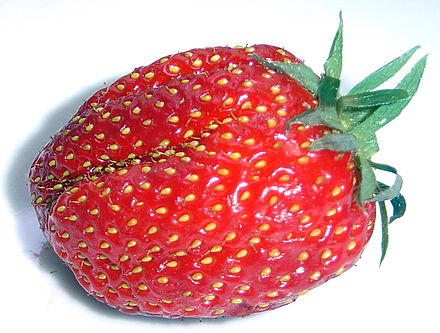 ➢ Presa is popular for its aroma, bright red color, small seedlings, juicy texture and sweetness. Strawberry is famous in milk shakes, ice cream, juices, cakes, preserves and perfumes. Presa is rich in Vitamin C and Manganese. Obviously not a native Filipino fruit, Presa grows in regions with high altitude and cold weather.
➢ Presa is popular for its aroma, bright red color, small seedlings, juicy texture and sweetness. Strawberry is famous in milk shakes, ice cream, juices, cakes, preserves and perfumes. Presa is rich in Vitamin C and Manganese. Obviously not a native Filipino fruit, Presa grows in regions with high altitude and cold weather.
➢ Region: Baguio, Benguet, Camarines Sur
Credits: Wikimedia Commons
25 Kalamansi (Calamansi or Calamondin)
 ➢ Kalamansi is Citro Fortunella hybrid. Used as a staple ingredient in steaks, as a partner in tonics, and popular in sour juice marmalade. It is famous in its raw state, than when ripened. Sour to taste, Kalamansi is high in Vitamin C.
➢ Kalamansi is Citro Fortunella hybrid. Used as a staple ingredient in steaks, as a partner in tonics, and popular in sour juice marmalade. It is famous in its raw state, than when ripened. Sour to taste, Kalamansi is high in Vitamin C.
➢ Region: Residential Backyards
Credits: Wikimedia Commons
26 Siniguelas (Jocote)
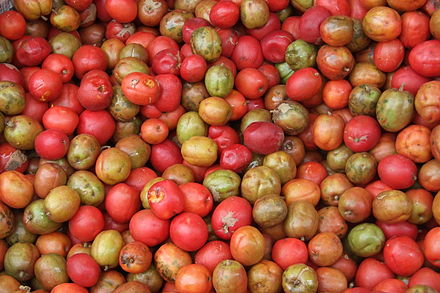 ➢ Raw Siniguelas are eaten together with rock salt. Red and ripe Jocote meanwhile is very sweet to the taste.
➢ Raw Siniguelas are eaten together with rock salt. Red and ripe Jocote meanwhile is very sweet to the taste.
➢ Region: Residential Backyards
Credits: Wikimedia Commons
27 Papaya
 ➢ Ripe Papaya is yellowish outside with an orange flesh. Raw Papaya, meanwhile, is dark green with a greenish white flesh and a charcteristic sticky sap. Raw Papayas are usually cooked (Tinola) while ripened papayas are delectably sweet and milky. It is rich in Vitamin C, Folate (B9) and Lycopene. The raw fruit is contraindicated for pregnant mothers.
➢ Ripe Papaya is yellowish outside with an orange flesh. Raw Papaya, meanwhile, is dark green with a greenish white flesh and a charcteristic sticky sap. Raw Papayas are usually cooked (Tinola) while ripened papayas are delectably sweet and milky. It is rich in Vitamin C, Folate (B9) and Lycopene. The raw fruit is contraindicated for pregnant mothers.
➢ Region: Residential Backyards
Credits: Wikimedia Commons
28 Singkamas (Jicama, Mexican Yam Bean or Mexican Turnip)
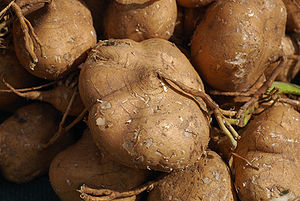 ➢ Though not considered a fruit but a vine, Singkamas is a favorite street staple for Filipinos. It is best consumed with Bagoong, and as part of Lumpiang Hubad. Jicama is high in Vitamin C and Dietary Fiber.
➢ Though not considered a fruit but a vine, Singkamas is a favorite street staple for Filipinos. It is best consumed with Bagoong, and as part of Lumpiang Hubad. Jicama is high in Vitamin C and Dietary Fiber.
➢ Region: Street Food
Credits: Wikimedia Commons
29 Duhat (Java Plum)
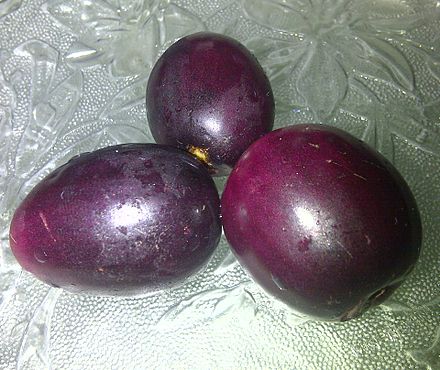 ➢ Duhat is oblong, ovoid, starts in green color, then turns shining crimson black as it ripens. The taste is a mix of sweet, sour and astringent flavours. It is famous for the purple stain it leaves in the toungue and hands. Duhat is rich in Vitamin C, Iron and Magnesium.
➢ Duhat is oblong, ovoid, starts in green color, then turns shining crimson black as it ripens. The taste is a mix of sweet, sour and astringent flavours. It is famous for the purple stain it leaves in the toungue and hands. Duhat is rich in Vitamin C, Iron and Magnesium.Credits: Wikimedia Commons
30 Balimimbing (Carambola)
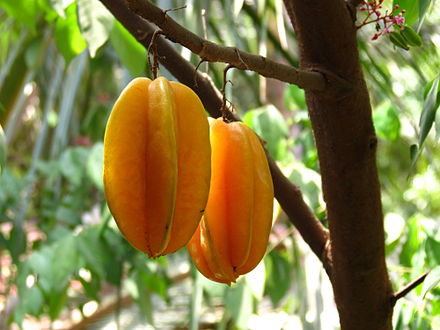 ➢ Crisp texture with a waxy yellow outer skin. Star-shaped cross section with a variation of sour to mildly sweet taste.
➢ Crisp texture with a waxy yellow outer skin. Star-shaped cross section with a variation of sour to mildly sweet taste.
➢ Region: Residential Backyards
Credits: Wikimedia Commons
31 Dalandan (Seville Orange or Bitter Orange)
 ➢ Another sub-variety of Citrus, Dalandan is great for making Orange Marmalade. It is sour and bitter to the taste.
➢ Another sub-variety of Citrus, Dalandan is great for making Orange Marmalade. It is sour and bitter to the taste.
➢ Region: Residential Backyards
Credits: Wikimedia Commons
32 Mansanas (Apple)
 ➢ The popularly sweet Mansanas is not native to the Philippines, but its common to find Apples in the Philippine cuisine. Apple skin is usually dark red and crunchy, while the flesh is usually yellow to pale white in color. Though not nutritionally loaded, Apple contains Flavonoids and Phytochemicals essential to human health.
➢ The popularly sweet Mansanas is not native to the Philippines, but its common to find Apples in the Philippine cuisine. Apple skin is usually dark red and crunchy, while the flesh is usually yellow to pale white in color. Though not nutritionally loaded, Apple contains Flavonoids and Phytochemicals essential to human health.
➢ Region: Mountain Province, Camarines Sur
Credits: Wikimedia Commons
33 Ubas (Grapes)
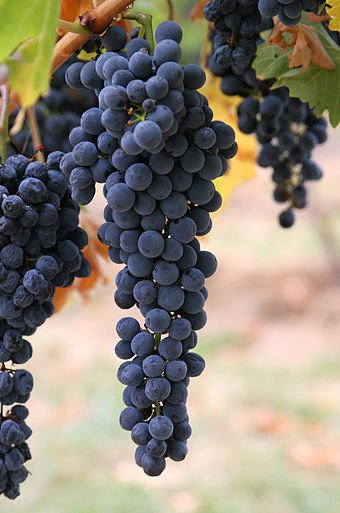 ➢ Ubas is a fruiting berry, famous for wines, juice, raisins, salads, jelly, and extracts. Usually purple in color, Grapes are high in Vitamin K, Polyphenols, Resveratrol and Antioxidants.
➢ Ubas is a fruiting berry, famous for wines, juice, raisins, salads, jelly, and extracts. Usually purple in color, Grapes are high in Vitamin K, Polyphenols, Resveratrol and Antioxidants.
➢ Region: Mountain Province, La Union
Credits: Wikimedia Commons
34 Kahel (Valencia Orange)
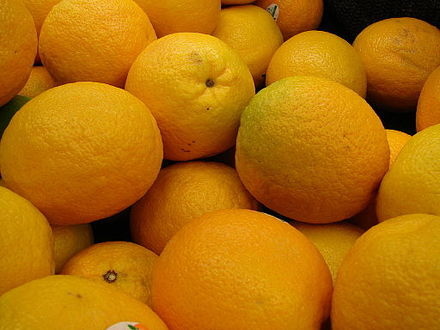 ➢ Kahel is a sweet orange hybrid. Sweet and sour to taste it is mainly grown in the Mountain Province. Oranges are high in Vitamin C and Flavonoids.
➢ Kahel is a sweet orange hybrid. Sweet and sour to taste it is mainly grown in the Mountain Province. Oranges are high in Vitamin C and Flavonoids.
➢ Region: Mountain Province, Camarines Sur
Credits: Wikimedia Commons
35 Sampaloc (Tamarind) Ripe
 ➢ Sampaloc is a pod-like fruit popularly made into sweetened sour candies and is a vital part of Sinigang and Sinampalukang Manok. Tamarind has a fleshy, juicy and sour acidic pulp. Brown or Reddish skin indicates its maturity. Raw consumption of the fruit is only applicable when the Sampaloc is ripened. Sampaloc is high in Vitamin B1 (Thiamine), B2 (Riboflavin), B3 (Niacin), Magnesium, Iron, Phosporous, Potassium and Calcium.
➢ Sampaloc is a pod-like fruit popularly made into sweetened sour candies and is a vital part of Sinigang and Sinampalukang Manok. Tamarind has a fleshy, juicy and sour acidic pulp. Brown or Reddish skin indicates its maturity. Raw consumption of the fruit is only applicable when the Sampaloc is ripened. Sampaloc is high in Vitamin B1 (Thiamine), B2 (Riboflavin), B3 (Niacin), Magnesium, Iron, Phosporous, Potassium and Calcium.
➢ Region: Residential Backyards
Credits: Wikimedia Commons
36 Kamote (Sweet Potato)
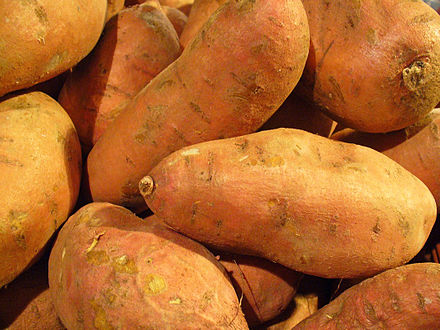 ➢ Popular as a deep fried Kamote Que, Sweet Potato is a major staple in Filipino cuisine. Not considered a fruit, but an edible tuberous root crop, Camote is usually yellow, red, violet or beige in color. Camote is very high in Vitamin A (120%), B5 (Pantothenic Acid), B6, Manganese, Potassium and Phosporous
➢ Popular as a deep fried Kamote Que, Sweet Potato is a major staple in Filipino cuisine. Not considered a fruit, but an edible tuberous root crop, Camote is usually yellow, red, violet or beige in color. Camote is very high in Vitamin A (120%), B5 (Pantothenic Acid), B6, Manganese, Potassium and Phosporous
➢ Region: Residential Backyards
Credits: Wikimedia Commons
37 Manggustin or Mangosteen (Purple Mangosteen)
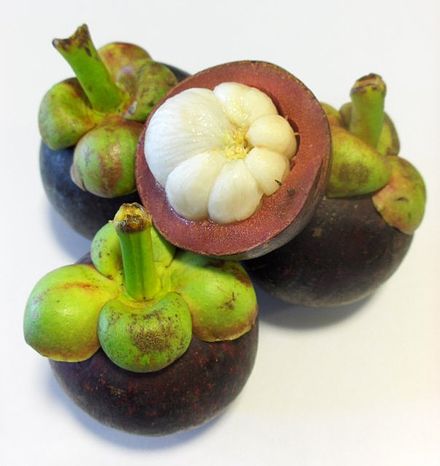
➢ Mangosteen is popular in teas and herbal capsules. Its fruit is sweet, tangy, juicy, fibrous and sour, while the purple rind is inedible. Nutritionally deficient, Mangosteen makes-up with Phytochemicals like Xanthonoids. It is also usually prepared for traditional medicine.
➢ Region: Davao
➢ Region: Davao
Credits: Wikimedia Commons
38 Peras (Pears)
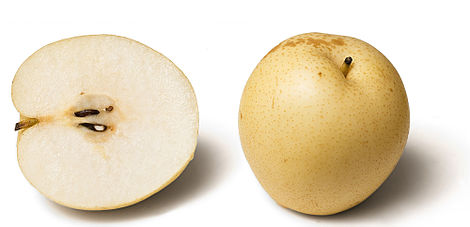 ➢ Peras is not native to the Philippines but must have come from East Asian countries by trade. Just like Apple, Pear skin is crunchy, with the flesh peculiarly sweet, grainy and watery.
➢ Peras is not native to the Philippines but must have come from East Asian countries by trade. Just like Apple, Pear skin is crunchy, with the flesh peculiarly sweet, grainy and watery.
➢ Region: Mountain Province
Credits: Wikimedia Commons
39 Limon (Lemon)
 ➢ Aromatic Lemon is famous in teas, cocktail drinks, cuisines, marinades, soft drinks and juices. Its zest is popular in baked goodies and other dishes. Just like Dayap, Limon is a known antidote to Scurvy. Lemon possesses a good amount of Vitamin C and Phytochemicals.
➢ Aromatic Lemon is famous in teas, cocktail drinks, cuisines, marinades, soft drinks and juices. Its zest is popular in baked goodies and other dishes. Just like Dayap, Limon is a known antidote to Scurvy. Lemon possesses a good amount of Vitamin C and Phytochemicals.
➢ Region: Mountain Province
Credits: Wikimedia Commons
40 Hagis (Syzygium)
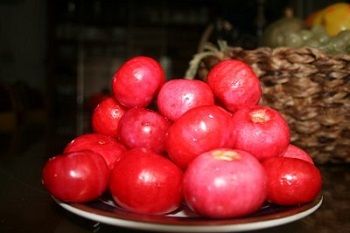 ➢ This beautiful cherry red Hagis is a sour fruit usually consumed with rock salt. It is popular as a juice, marmalade or jelly.
➢ This beautiful cherry red Hagis is a sour fruit usually consumed with rock salt. It is popular as a juice, marmalade or jelly.
➢ Region: Bicol Region, Davao
Credits: Wikimedia Commons
41 Dayap (Lime)
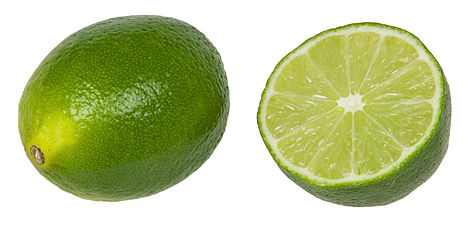 ➢ Dayap a known antidote to scurvy, is high in Vitamin C, and Phytochemicals like Polyphenols and Terpenes. Dayap is popular in cocktails, tonics, margaritas, marmalade and perfumes.
➢ Dayap a known antidote to scurvy, is high in Vitamin C, and Phytochemicals like Polyphenols and Terpenes. Dayap is popular in cocktails, tonics, margaritas, marmalade and perfumes.
➢ Region: Mountain Province
Credits: Wikimedia Commons
42 Kamansi (Seeded Breadfruit)
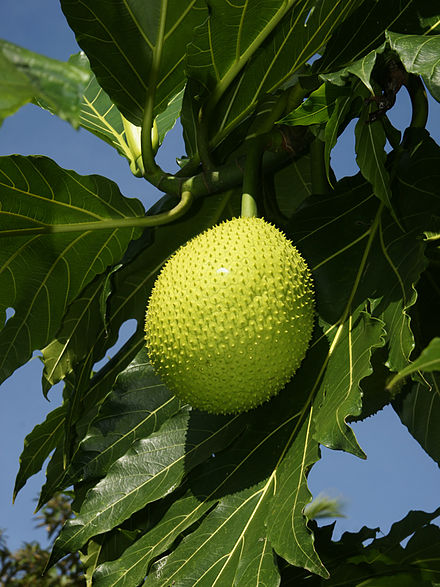 ➢ Notoriously similar in appearance to Langka or Jackfruit, Kamansi is a fruit rich in starch which turns to glucose when ripe. It is said to taste like potato or a baked bread when cooked. Kamansi is high in Vitamin C, Potassium and B1 (Thiamine).
➢ Notoriously similar in appearance to Langka or Jackfruit, Kamansi is a fruit rich in starch which turns to glucose when ripe. It is said to taste like potato or a baked bread when cooked. Kamansi is high in Vitamin C, Potassium and B1 (Thiamine).
➢ Region: Residential Backyards
Credits: Wikimedia Commons
43 Lipote (Jambolan Plum)
 ➢ It can be compared to Duhat, but Lipote differs greatly since it grows in clusters like Grapes. It has a purple to almost black colored skin, with a sweet and sour taste when ripened. It is high in Vitamin C.
➢ It can be compared to Duhat, but Lipote differs greatly since it grows in clusters like Grapes. It has a purple to almost black colored skin, with a sweet and sour taste when ripened. It is high in Vitamin C.
➢ Region: Visayas, Bicol
Credits: Flickr
44 Mabolo or Kamagong Fruit or Tálang (Velvet Apple or Butter Fruit)
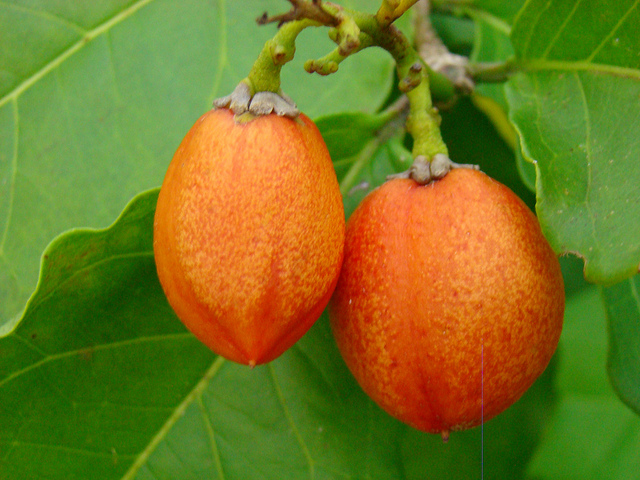 ➢ Pink colored Mabolo looks like an apple at first glance, but its smell is comparable to rotten cheese or feline feces. It tastes like fruit cream cheese.
➢ Pink colored Mabolo looks like an apple at first glance, but its smell is comparable to rotten cheese or feline feces. It tastes like fruit cream cheese.
➢ Region: Bohol, Residential Backyards
Credits: Flickr
45 Bulala (Pulasan)
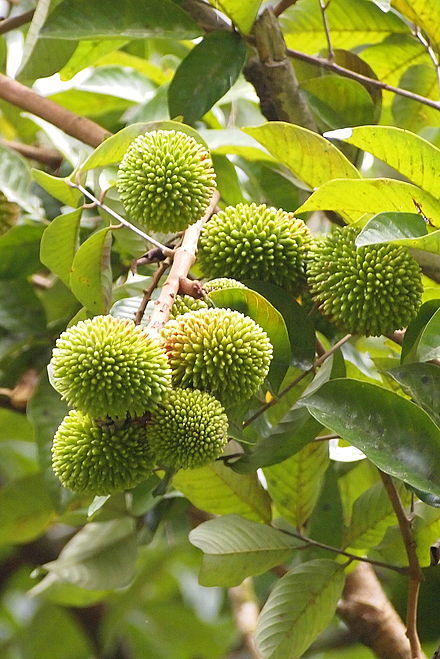 ➢ Often confused with Rambutan, Bulala is a sweeter version and the rarer fruit between the two. It also has spikes, but not the hairy spines that Rambutan has. Also, the seed is edible in contrast to Rambutan.
➢ Often confused with Rambutan, Bulala is a sweeter version and the rarer fruit between the two. It also has spikes, but not the hairy spines that Rambutan has. Also, the seed is edible in contrast to Rambutan.
➢ Region: Residential Backyards
Credits: Wikimedia Commons
46 Galo or Salungugapit (Galonut)
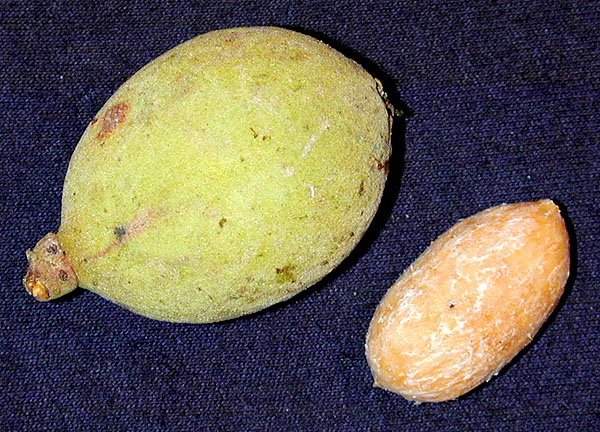 ➢ Galo is an oval shaped fruit in green color that can be consumed raw or cooked by boiling or roasting.
➢ Galo is an oval shaped fruit in green color that can be consumed raw or cooked by boiling or roasting.Credits: Wikimedia Commons
47 Bignay (Salamander Fruit)
 ➢ Red to Purple in color, Bignay is a fruit which grows from a shrub. It tastes sour and is usually made into tea, liquor or jam.
➢ Red to Purple in color, Bignay is a fruit which grows from a shrub. It tastes sour and is usually made into tea, liquor or jam.
➢ Region: Batangas, Visayas
Credits: Fruitipedia
48 Anonas (Custard Apple or Bull's Heart)
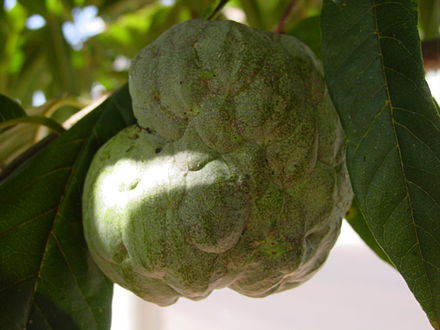 ➢ A heart shaped compound fruit, Anonas skin contains knobby warts. Ripened flesh is creamy white in appearance.
➢ A heart shaped compound fruit, Anonas skin contains knobby warts. Ripened flesh is creamy white in appearance.
➢ Region: Residential Backyards
Credits: Wikimedia Commons
49 Biriba (Wild Sweet Sop or Wild Cashina)
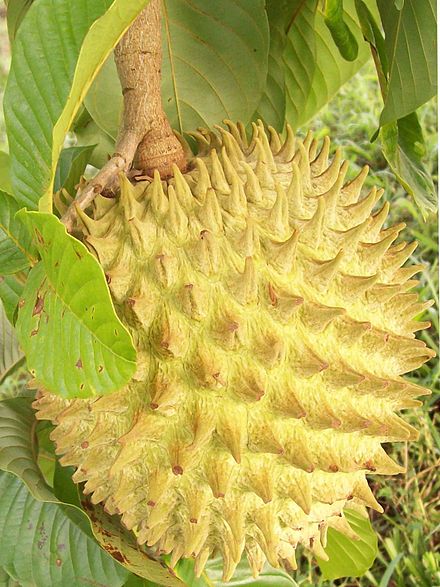 ➢ Prepared as juice or in sorbetes due to its creamy texture, Biriba is shaped like a heart and contains numerous hexagonal protrusions.
➢ Prepared as juice or in sorbetes due to its creamy texture, Biriba is shaped like a heart and contains numerous hexagonal protrusions.
➢ Region: Residential Backyards
Credits: Wikimedia Commons
50 Sapinit (West Indian Raspberry or Roseleaf Bramble)
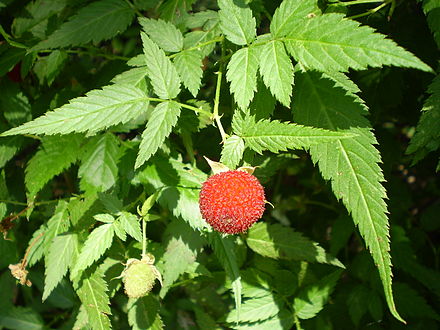 ➢ A fruit that grows from a shrub, Sapinit possesses a sweet, sour and bitter taste perfect for marmalade, juice, wine or jam. It is known to treat Alzheimer's disease.
➢ A fruit that grows from a shrub, Sapinit possesses a sweet, sour and bitter taste perfect for marmalade, juice, wine or jam. It is known to treat Alzheimer's disease.
➢ Region: Mount Banahaw
Credits: Wikimedia Commons
Honorable Mention:
51 Marang (Artocarpus Odoratissimus or Tarap)
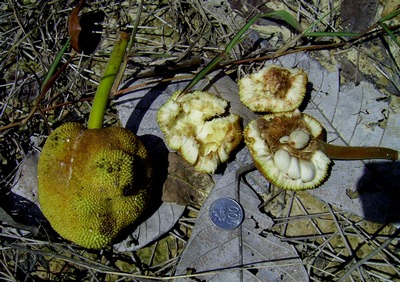 ➢ Marang (related to Jackfruit) is a staple fruit of Davao together with Durian. It is said to smell almost like Durian though not as pungent, yet superior in taste compared to the Jackfruit. Marang tastes like a juicy Banana with a mild creamy texture. It is advised that the fruit not be ripened thoroughly to preserve the taste, and must be consumed within hours of opening since oxidation may affect its taste.
➢ Marang (related to Jackfruit) is a staple fruit of Davao together with Durian. It is said to smell almost like Durian though not as pungent, yet superior in taste compared to the Jackfruit. Marang tastes like a juicy Banana with a mild creamy texture. It is advised that the fruit not be ripened thoroughly to preserve the taste, and must be consumed within hours of opening since oxidation may affect its taste.
➢ Region: Davao Region
Credits: Wikimedia Commons
52 Susong Kalabaw (Uvaria Rufa Fruit or Blume or Carabao Teats)
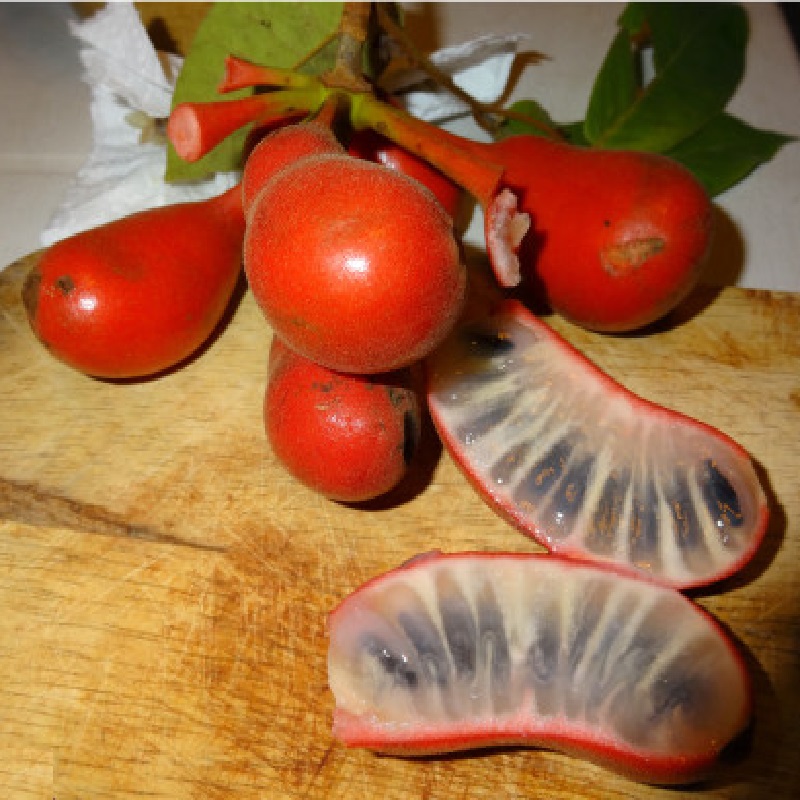 ➢ The fruits of Uvaria Rufa possess a sharp sweet-sour taste and are edible. The fruit got it's namesake since the shape resembles the anatomy of the Carabao's teats.
➢ The fruits of Uvaria Rufa possess a sharp sweet-sour taste and are edible. The fruit got it's namesake since the shape resembles the anatomy of the Carabao's teats.
➢ Region: Northern Luzon, Bulacan, Romblon, Palawan and Mindanao
Credits: Wikimedia Commons
53 Pitaya or (Dragon Fruit)
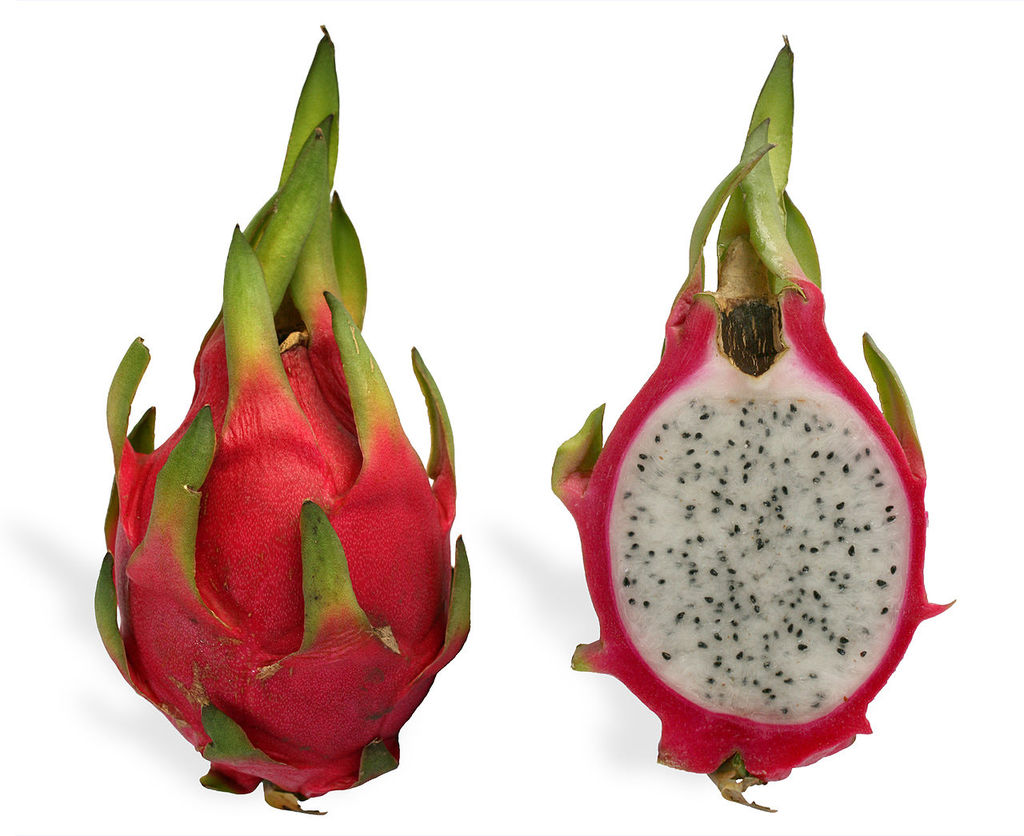 ➢ Dragon Fruit is a native cactus fruit from Mexico. It is now popularly grown in Southeast Asia, with the Philippines steadily growing in farm production. The fruit is a high source of Vitamin C, Potassium, Lipids and Fibers which are touted to prevent certain cancers. The seeds are nutty and likened to Kiwifruit seeds, while the taste is described to be mildly sweet.
➢ Dragon Fruit is a native cactus fruit from Mexico. It is now popularly grown in Southeast Asia, with the Philippines steadily growing in farm production. The fruit is a high source of Vitamin C, Potassium, Lipids and Fibers which are touted to prevent certain cancers. The seeds are nutty and likened to Kiwifruit seeds, while the taste is described to be mildly sweet.
➢ Region: Cavite, Rizal, Laguna, Ilocos Norte
Credits: Wikimedia Commons
54 Pasyenarya or Garanadina or Parang (Masaflora or Passion Fruit)
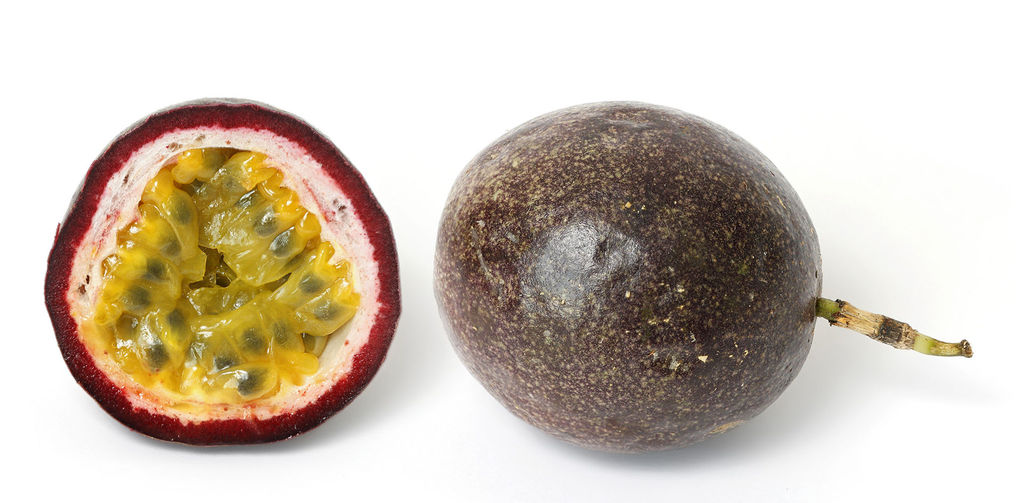 ➢ Locally known as either Pasyenarya or Garanadina or Parang, Passion Fruit is a good source of Vitamin C, Riboflavin and Fibers. The pulpy skin is hard but can be pressed open with two hands. It has a watery interior with seeds which may either look like chicken eyes or tadpoles. The fruit is popular in mixed juices, jams, marmalades, salads, and fruit cocktail syrups.
➢ Locally known as either Pasyenarya or Garanadina or Parang, Passion Fruit is a good source of Vitamin C, Riboflavin and Fibers. The pulpy skin is hard but can be pressed open with two hands. It has a watery interior with seeds which may either look like chicken eyes or tadpoles. The fruit is popular in mixed juices, jams, marmalades, salads, and fruit cocktail syrups.
➢ Region: Agusan, Cotabato, Davao
Credits: Wikimedia Commons
55 Granada or (Pomegranate)
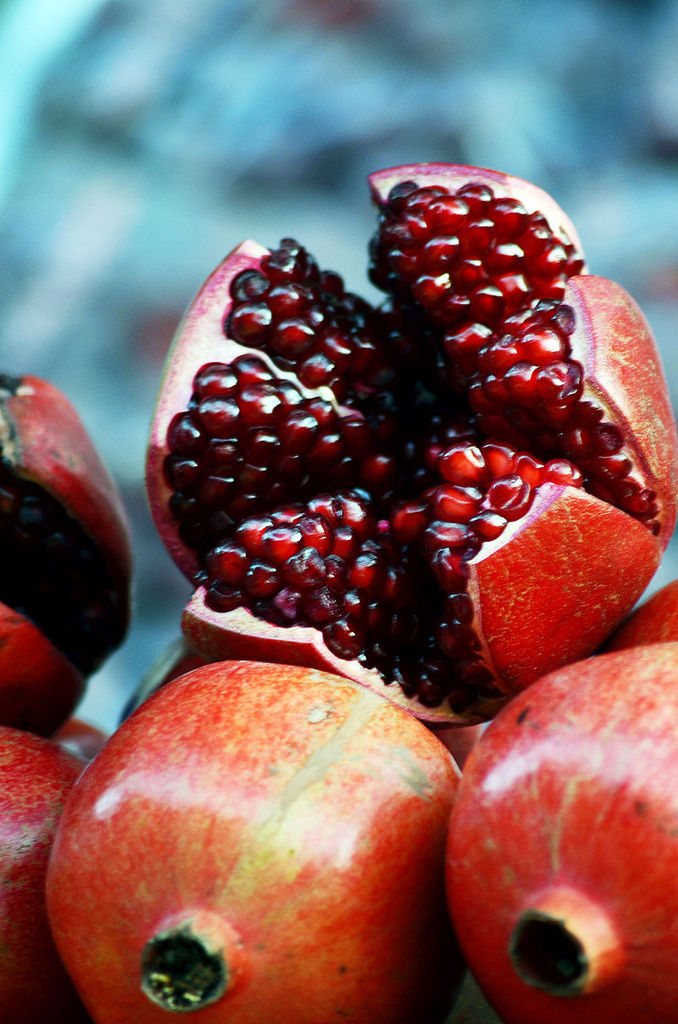 ➢ Granada or more commonly known as Pomegranate is a fruit from a garden plant in the Philippines. It is also thought to be common in the wild. The juice of Pomegrenates contain anthocyanins, glucose, Vitamin C, ellagic acid, gallic acid, caffeic acid, catechin, quercetin, rutin, minerals, and proteins.
➢ Granada or more commonly known as Pomegranate is a fruit from a garden plant in the Philippines. It is also thought to be common in the wild. The juice of Pomegrenates contain anthocyanins, glucose, Vitamin C, ellagic acid, gallic acid, caffeic acid, catechin, quercetin, rutin, minerals, and proteins.
➢ Region: Garden Variety, Wild
Credits: Wikimedia Commons
written by Rock Punzalan for Pinoy Search Network
FAIR USE DISCLAIMER: The following data is for educational, scholarship review and archiving purposes only. By viewing this information, you release the website and its authors from any responsibility or liabilities. Though we verify and maintain the accuracy of the provided data, the absence of unintented typographical and factual errors cannot be guaranteed. Use the page at your own risk. For any suggestions, updates, credits or correction requests, contact us or comment below.
Like Us
Trending Posts
- Korean War: When 900 Filipinos defeated a 40,000 strong Chinese Communist army
- 35 Must-Know Filipino Greetings and Phrases for Travelers
- Miguel Malvar – Forward without ever turning back
- Andres Bonifacio – I declare this assembly dissolved
- December 30, 1896 – execution of Jose Rizal
- August 21, 1983 – Assassination of Ninoy Aquino
- September 21, 1972 – Marcos declares Martial Law
- Philippine Adobo is not Adobar
- Binondo – world’s oldest Chinatown
- Kalaw – Clock of the Mountains
- Philippine Eagle – largest extant eagle in the world
- Top Filipino Heroes and their favorite food
- Top 50 Must-Try Fruits in the Philippines
- Ninoy Aquino – The Filipino is worth dying for
- Antonio Luna – I will fight and offer my life
- Antonio Luna – I am going not to command but to obey
- Macario Sakay – Death comes to us all sooner or later
- Jose Abad Santos – Do not cry Pepito
- Gregorio del Pilar – The general has given me the pick
- Ninoy Aquino – No to tyranny! No to corruption!
- Jose Rizal – What said those two souls communicating
- Jose Rizal – Cowardice rightly understood begins
- Jose Rizal – Our liberty will not be secured at the sword
- Andres Bonifacio – Reason teaches us that we must be united
- Andres Bonifacio – Reason teaches us that we cannot expect
- Andres Bonifacio – Love your Country next to God
- Ninoy Aquino – For seven years, I was not allowed
- Ninoy Aquino – The Filipino asked for nothing more
- Ninoy Aquino – It is a rare privilege for me to join the Motherland
- Ninoy Aquino – Son my decision is an act of conscience
- Jose Rizal – I have to believe much in God because
- Jose Rizal – He who does not know how to look back
- Jose Rizal – One only dies once, and if one does
- Abelardo Aguilar discovered Erythromycin
- March 17, 1521 – Magellan landed in Homonhon
- March 16, 1521 – Magellan discovered the Philippines
- Top 100 Bugtong Collection
- The Six Nations which invaded the Philippines
- Baybayin, not Alibata is the ancient Filipino writing system
- The many names of Lapu-Lapu






